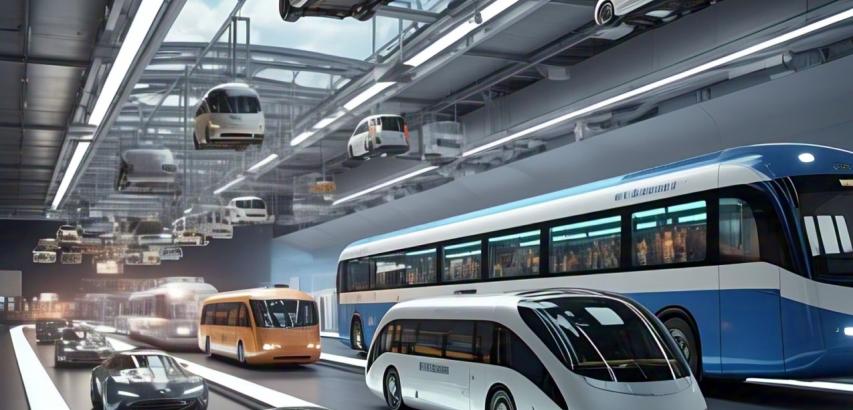A Smart Transport Project integrates advanced technologies like the Internet of Things (IoT), artificial intelligence (AI), big data, and automation to optimize urban and intercity mobility. These initiatives aim to reduce congestion, lower emissions, enhance safety, and create seamless, user-centric transportation networks. By reimagining traditional infrastructure and services, smart transport systems address the growing challenges of urbanization, climate change, and resource efficiency.
Key Components
IoT-Enabled Traffic Management:
Sensors and cameras monitor traffic flow, weather conditions, and road incidents in real time.
 |  |  |
 |  |  |
Adaptive traffic lights adjust signal timings dynamically to reduce bottlenecks.
 |  |  |  |
Autonomous Vehicles (AVs):
Self-driving cars, buses, and trucks use AI, LiDAR, and machine learning to navigate safely.
 |  |  |
Fleets of AVs can be coordinated to reduce traffic and improve ride-sharing efficiency.
Mobility-as-a-Service (MaaS) Platforms:
Apps like Whim (Helsinki) integrate public transit, ride-hailing, bike-sharing, and e-scooters into a single payment system.
Users plan, book, and pay for multi-modal journeys via a unified interface.
Predictive Analytics for Public Transit:
AI analyzes historical and real-time data to predict delays, optimize bus/train schedules, and manage fleet maintenance.
Electric Vehicle (EV) Infrastructure:
Smart charging stations with IoT connectivity balance grid demand and prioritize renewable energy sources.
 |  |  |
Vehicle-to-Grid (V2G) systems allow EVs to return excess power to the grid during peak hours.
Blockchain for Logistics:
Securely track shipments, verify ownership, and automate toll/parking payments using decentralized ledgers.
5G and V2X Communication:
Ultra-fast 5G networks enable real-time communication between vehicles, infrastructure, and pedestrians (V2X).
Enhances collision avoidance and emergency response.
Benefits
Reduced Congestion: AI-optimized routes and traffic signals cut travel time by up to 25%.
Lower Emissions: EV adoption and efficient transit systems decrease carbon footprints.
Enhanced Safety: Autonomous systems minimize human error, a leading cause of accidents.
Cost Savings: Predictive maintenance reduces infrastructure repair costs; shared mobility cuts individual expenses.
Accessibility: Real-time apps and AVs improve mobility for elderly/disabled populations.
Challenges
High Infrastructure Costs: Retrofitting cities with sensors, 5G, and EV stations requires significant investment.
Data Privacy Risks: Mass surveillance and data collection raise concerns about user privacy.
Regulatory Hurdles: Laws lag behind AV and drone advancements, creating legal ambiguities.
Public Acceptance: Skepticism about AV safety or data-sharing may slow adoption.
Real-World Examples
Singapore’s Smart Nation Initiative: Uses AI and IoT to manage traffic, predict bus arrivals, and incentivize off-peak travel.
Barcelona’s Superblocks: Redesigns urban zones to prioritize pedestrians, cyclists, and green transport.
Tesla’s Autopilot: Semi-autonomous driving system with over-the-air updates for continuous improvement.
Uber’s Jump Bikes: Dockless e-bike networks integrated with ride-hailing apps for last-mile connectivity.
Future Trends
Hyperloop Networks: High-speed vacuum tube transport for intercity travel (e.g., Virgin Hyperloop).
Urban Air Mobility (UAM): Electric vertical takeoff and landing (eVTOL) aircraft for city air taxis.
AI-Powered Demand Forecasting: Predictive models to allocate resources during events or disasters.
Green Corridors: Dedicated lanes for EVs, AVs, and freight to prioritize sustainable transport.
Smart Transport Projects are redefining how people and goods move, blending innovation with sustainability. While challenges like funding and regulation persist, the potential for cleaner, safer, and more efficient mobility systems is immense. As cities worldwide embrace these technologies, the vision of seamless, equitable, and eco-friendly transportation is steadily becoming a reality.
